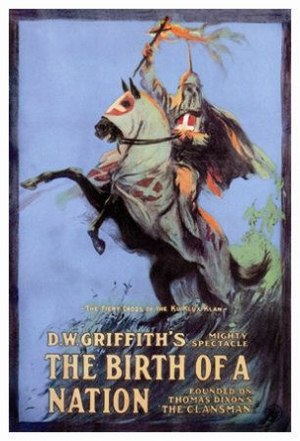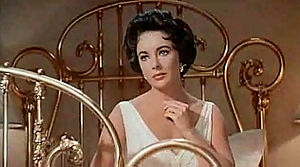 Image via WikipediaThe Birth of a Nation
Image via WikipediaThe Birth of a Nation (originally called
The Clansman) is a 1915
American silent film co-written (with
Frank E. Woods), co-
produced (with Harry Aitken), and
directed by
D. W. Griffith and based on the
novel and
play The Clansman, both by
Thomas Dixon, Jr. It was originally released on February 8, 1915. The film was originally presented in two parts, separated by an intermission.
The film chronicles the relationship of two families in
Civil War and
Reconstruction-era America: the pro-
Union northern Stonemans and the pro-
Confederacy southern Camerons over the course of several years. The
assassination of
President Abraham Lincoln by
John Wilkes Booth is dramatized.
According to
Variety,
The Birth of a Nation, which was filmed on a budget of an estimated
$110,000, is the highest-grossing film of the silent film era, with earnings of approximately $10 million
and has been praised for its technical innovations.
However, the film was, and remains, highly controversial due to its portrayal of
African American men (played by
white actors in
blackface) as unintelligent and sexually aggressive towards white women, and the portrayal of the
Ku Klux Klan (whose original founding is dramatized) as a heroic force.
There were widespread protests
against
The Birth of a Nation, and it was banned in several cities. The outcry of
racism was so great that D.W. Griffith was inspired to produce
Intolerance the following year.
Its pioneering technical work, often the work of Griffith's under-rated cameraman Billy Bitzer, includes many techniques that are now standard features of films, but first used in this film. Griffith brought all of his experience and techniques to this film from his earliest short films at Biograph, including the following:
- the use of ornate title cards
- special use of subtitles graphically verbalizing imagery
- its own original musical score written for an orchestra
- the introduction of night photography (using magnesium flares)
- the use of outdoor natural landscapes as backgrounds
- the definitive usage of the still-shot
- elaborate costuming to achieve historical authenticity and accuracy
- many scenes innovatively filmed from many different and multiple angles
- the technique of the camera "iris" effect (expanding or contracting circular masks to either reveal and open up a scene, or close down and conceal a part of an image)
- the use of parallel action and editing in a sequence (Gus' attempted rape of Flora, and the KKK rescues of Elsie from Lynch and of Ben's sister Margaret)
- extensive use of color tinting for dramatic or psychological effect in sequences
- moving, traveling or "panning" camera tracking shots
- the effective use of total-screen close-ups to reveal intimate expressions
- beautifully crafted, intimate family exchanges
- the use of vignettes seen in "balloons" or "iris-shots" in one portion of a darkened screen
- the use of fade-outs and cameo-profiles (a medium closeup in front of a blurry background)
- the use of lap dissolves to blend or switch from one image to another
- high-angle shots and the abundant use of panoramic long shots
- the dramatization of history in a moving story - an example of an early spectacle or epic film with historical costuming and many historical references (e.g., Mathew Brady's Civil War photographs)
- impressive, splendidly-staged battle scenes with hundreds of extras (made to appear as thousands)
- extensive cross-cutting between two scenes to create a montage-effect and generate excitement and suspense (e.g., the scene of the gathering of the Klan)
- expert story-telling, with the cumulative building of the film to a dramatic climax
The film looks remarkably genuine and authentic, almost of documentary quality (like Brady's Civil War photographs), vividly reconstructing a momentous time period in history - and it was made only 50 years after the end of the Civil War.
 Image via Wikipedia
Image via Wikipedia















